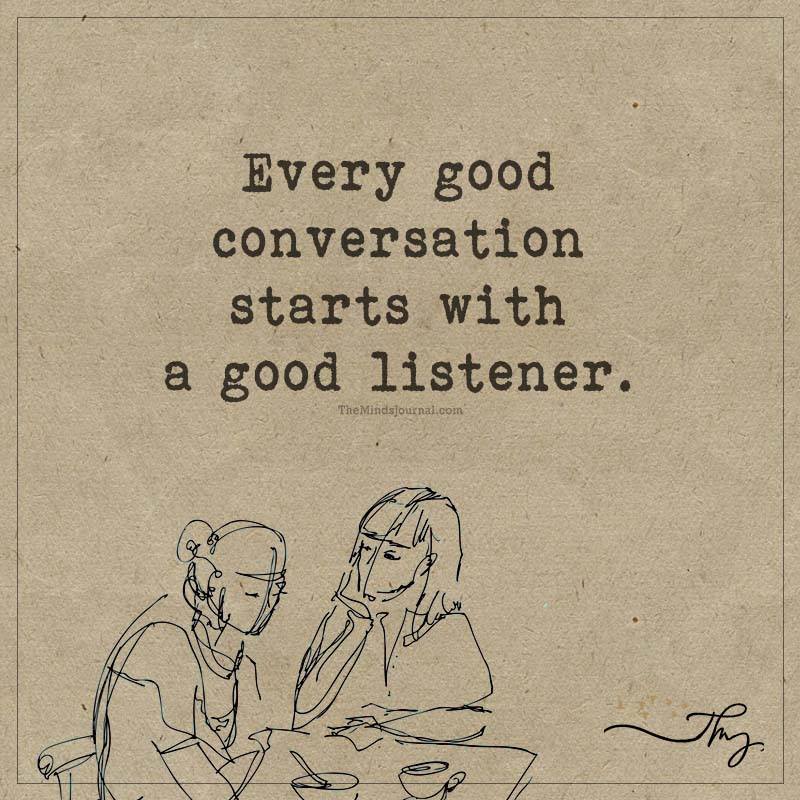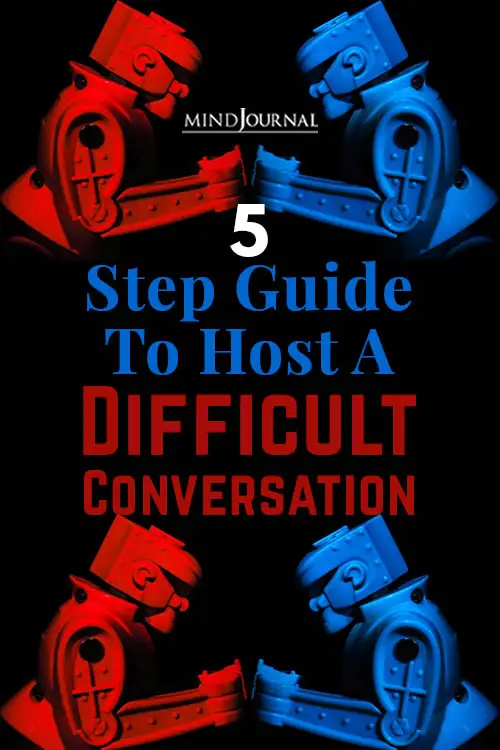In a previous post, the 10 steps were outlined of what is involved in having a difficult conversation. After you have finished the first five steps of preparing for this conversation, you are ready to engage in a two-way dialogue. Specifically, it’s time to “fact” find, clarify, dig deeper, express your perspective, problem-solve, reflect, and then follow-up.
1. “Fact” Find
When starting the difficult conversation, reiterate the purpose to frame the conversation and then begin with their perspective. Try to think of yourself as a mediator between understanding your experience versus theirs and to uncover where disagreements and miscommunications arose.
It’s important to note that most people do not enter a difficult conversation thinking they are wrong. Everyone feels they are right or at least that their opinion is valid. So coming into the conversation trying to “prove” you are right is unproductive. It’s more important to listen to their perspective.

I write this step as “fact” finding in quotations because, in this situation, there aren’t likely actual facts, just perspectives. However, people generally feel their opinions or perspectives are facts. Delving into understanding the other person’s perspective will help you determine what the true issue is.
Remember, your goal is to solve a particular problem, and you cannot do that with only your perspective. Be curious and genuinely be interested in learning their side.
Lastly, try to stick to one issue at a time. Hopefully, your purpose is limited, but sometimes the problem can be complex. Keeping it simple can be very difficult because this scenario may remind you of the dozen other previous times it happened, but this is why we examine our own emotions before going into it.
It’s important to constantly remind ourselves that you are trying to resolve the present and action plan for future prevention. At a certain point, the past becomes irrelevant, but this is much easier said than done.
Related: The Art of Conversation: 25 Great Conversation Starters
2. Clarify and Dig Deeper
Once you feel you understand the issue, clarify and dig deeper. Clarify by reframing or reflecting what you heard to ensure it’s truly what they meant. You may find that in clarifying that you interpret things wrong and defenses go up. If language becomes about facts/truths steer it towards perceptions/opinions; instead of blame, discuss your own contributions; instead of accusing, discuss how it made you feel.
For instance, “It sounds like you were really angry because this reflected poorly on you” may turn into “No, I was really angry because it’s constantly an issue and a barrier for me to get my work done.”
Once perspectives are clarified, the purpose of digging deeper is to determine the root causes of the issue. Root causes may help you gain insights into why other issues are also arising. Determining the root cause can potentially help you save time because then you will see adjacent or related issues that can get fixed simultaneously. However, ensure that you stick to the purpose of the conversation and note the root causes for a later discussion.
Related: How To Keep a Conversation Going? The Art Of Listening For Hooks
3. Express your perspective
Now that you have clarified, developed an understanding, and got to a root cause, now is the time to share your viewpoint. Waiting to share your viewpoint helps ensure the conversation is open and rapport is established.
But you still need to share your perspective because it’s important for them to understand the impact their choices or behaviours have had on you. From preparing for the conversation, you should recognize your own root causes or emotions tied to the conversation and you may want to be open about that.
This isn’t a time to ‘vent’ your emotions, but it is a time to describe them carefully: “I’m anxious about bringing this up but..” or “I don’t know whether you intended this, but I felt extremely uncomfortable with…” Being open with your emotions is important but you can discuss your emotions without necessarily being emotional. You can also discuss how this is rooted in a deeper issue for you.
For example, “My reactions here probably have a lot to do with my previous experiences,” or “I think the reason this impacts more is that I don’t like to think of myself as someone who.” Discussing your emotions in this way helps you establish that your perspective isn’t “the truth” it’s just your experience and will help keep the conversation open.
Discussing that something hurts you or gets you angry is healthy. But if you find that you start to express those emotions during the conversation, you may want to ask for a break and set a time to reconvene.
This is not an escape, but rather you want to be able to remain open to listening to their perspective and emotions often shut down the ability to do so. You can do this by stating, “I’m finding myself reacting emotionally, and I want to ensure that I stay open and positive in this conversation. Are you OK if we just take 10 mins (or even a day)?”
When you discuss your perspective, you also need to call out your contributions to the problem. For example, “There are a number of things that I did that made this more difficult.” This will help them remain open to listening and also potentially help them recognize their contribution.
Lastly, don’t use absolutes in your perspective “you always do this”—remember to stick with just the current situation.
Related: 48 Deep Conversation Starters To Know Someone Better
4. Problem-Solve
Now that you have both discussed your perspectives and “all the cards are on the table.” it’s finally time to problem-solve. Problem-solving may help resolve the present situation and/or it could be to prevent similar instances happening in the future.
When you discuss a possible solution that you both agree upon, test it out. That is, run through scenarios and see how the solution actually would work. Then, figure out what is still missing in your solution.
Ensure that with any actions you understand ‘who is doing what by when’. Set a date to follow-up and see if things have been resolved.
Related: The Helicopter Technique Metaphor: 10 Useful Options For Navigating Difficult Conversations
5. Reflect & Follow-Up
After the difficult conversation, think about how you feel. Satisfied? Anxious? If emotions arose that you weren’t prepared for, what triggered them?
Remember, you will make mistakes, not every conversation will go exactly as you hoped or planned. If you feel your mistakes negatively impacted the other person, discuss this during a follow-up session. Or you may need to have another difficult conversation because the first one didn’t go well.
At the scheduled follow-up session see if the solution has been working or if unanticipated snags arose. This follow-up session not only holds you both accountable. but also ensures a strong working relationship continues.
Remember that we tend to judge ourselves by our intentions, but we judge others by their impact (our interpretation of their actions). So even when we have good intentions, we can have a negative impact—and just because you were negatively impacted, doesn’t mean they had negative intentions. Be kind, give people the benefit of the doubt, and find solutions together.
For more information contact Lauren Florko at http://www.triplethreatconsulting.ca/
References
Stone, D., Patton, B., & Heen, S. (1999). Difficult Conversations: How to Discuss What Matters Most. NY: Penguin Group.
Written by: Lauren Florko, Ph.D
Originally appeared on Psychology Today









Leave a Reply
You must be logged in to post a comment.